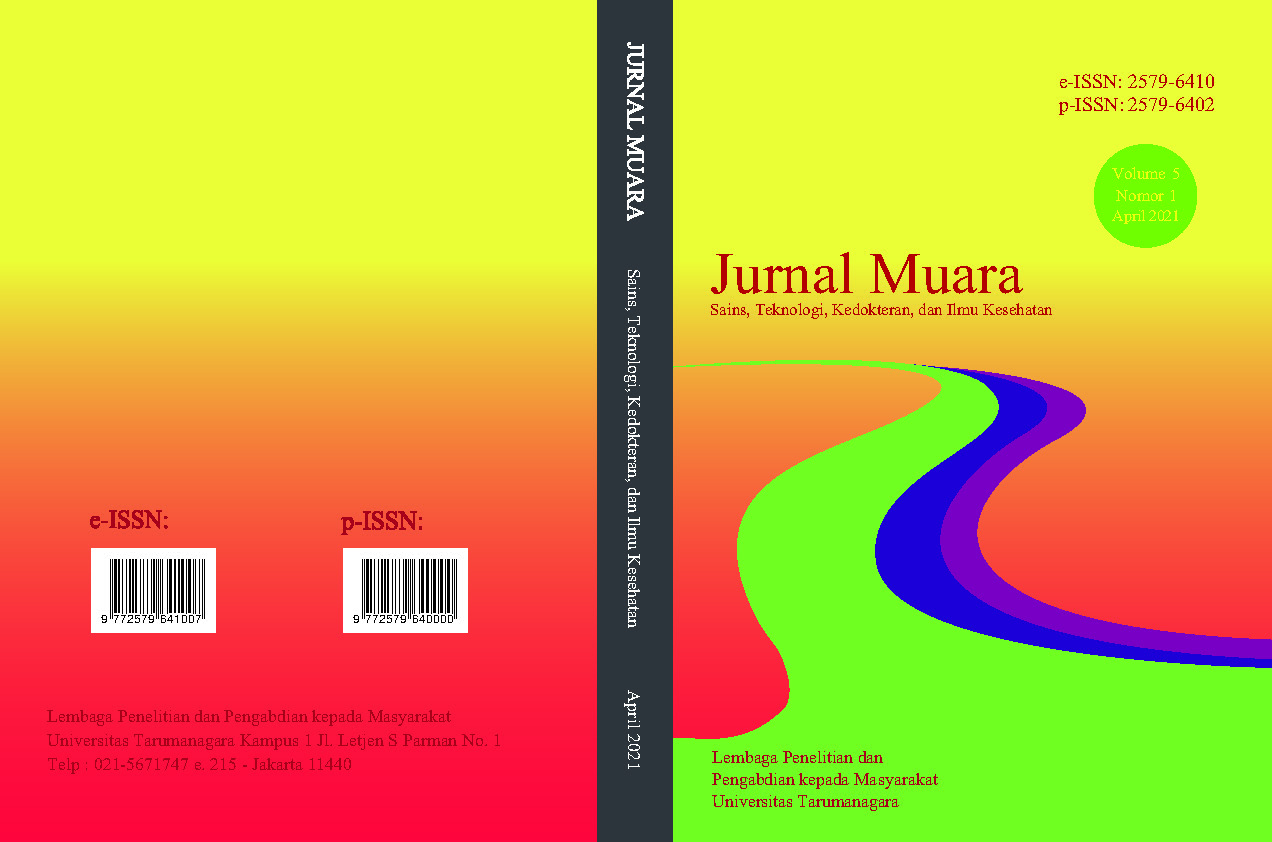ANALISIS FAKTOR KERUGIAN WASTE MATERIAL BESI BETON GEDUNG BERTINGKAT
Main Article Content
Abstract
Material as one of the components that has a contribution of 40-60% of the project cost in the research of Intan et al., 2005. Concrete is currently being studied because it is one of the five materials that affects 80% of material costs.. The purpose of this research is to examine how much the loss of iron concrete material waste and the ranking of the factors that influence it in multi-storey building projects. The research method is by conducting a questionnaire to contractors. The data collection process is carried out by distributing questionnaires in multi-storey building projects in Jakarta. Measuring the value of the questionnaire as many as 64 respondents used the Likert measurement technique. The sequence of data processing, first done by testing the validity and reliability testing. After that, these factors are ranked using the Relative Importance Index method. The result is a loss of Concrete Iron material waste of 7.5% and ratings that affect the loss of concrete are: not planning reinforcement bestat, complicated image detailing, cutting errors due to lack of understanding of work drawings / carelessness, lack of / unclear image information, use of wrong so that it needs to be replaced, the remaining cuts due to the process of use and a design change.
Keywords: multi-storey building; reinforcing steel; waste material
Abstrak
Material sebagai salah satu komponen yang mempunyai kontribusi sebesar 40-60% dari biaya proyek di dalam penelitian Intan et al, 2005. Besi beton saat ini mau diteliti karena merupakan salah satu dari lima material mempengaruhi 80% biaya material. Tujuan penelitian ini meneliti berapa besar kerugian waste material besi beton dan peringkat faktor faktor yang mempengaruhinya pada proyek bangunan gedung bertingkat . Metode penelitian dengan melakukan kuesioner terhadap kontraktor. Proses pengumpulan data yang dilakukan adalah dengan menyebar kuesioner di proyek bangunan gedung bertingkat yang berada di Jakarta. Pengukuran nilai kuesioner sebanyak 64 responden digunakan teknik pengukuran Likert. Urutan pengolahan data, pertama dilakukan dengan uji validitas dan uji reliabilitas. Setelah itu faktor-faktor tersebut ditentukan peringkat dengan metode Relative Importance Index. Hasilnya adalah kerugian waste material Besi Beton sebesar 7,5 % dan peringkat yang mempengaruhi kerugian besi beton adalah:tidak merencanakan bestat penulangan, pendetailan gambar yang rumit, kesalahan pemotongan karena kurang memahami gambar kerja/kecerobohan,informasi gambar kurang/tidak jelas, penggunaan material yang salah sehingga perlu diganti, sisa pemotongan karena proses pemakaian dan adanya perubahan desain.
Article Details
Section
This work is licensed under a Jurnal Muara Sains, Teknologi, Kedokteran dan Ilmu Kesehatan Creative Commons Attribution-ShareAlike 4.0 International License.
Authors transfer copyright or assign exclusive rights to the publisher (including commercial rights)
References
Bossink, B. A. G., & Brouwers, H. J. H. (1996). Construction waste: quantification and source evaluation. Journal of construction engineering and management, 122(1), 55-60.
Cichetti, D. V. (1994). Guidelines, criteria, and rules of thumb for evaluating normed and standardized assessment instruments in psychology. Psychological assessment, 6(4), 284.
Cronbach, L. J. (1951). Coefficient alpha and the internal structure of tests. Psychometrika, 16(3), 297-334
Formoso, C. T., Soibelman, L., De Cesare, C., & Isatto, E. L. (2002). Material waste in building industry: main causes and prevention. Journal of construction engineering and management, 128(4), 316-325.
Gozali, I. (2001). Aplikasi Analisis Multivariate. Dengan_ Program SPSS. Edisi Pertama. Semarang: Badan Penerbit Universitas Diponegoro.
Haposan, J. (2009). Identifikasi Material Sisa pada Proyek Ruko San Diego PakuwonCity Surabaya. Skripsi, Institut Teknologi Sepuluh November Surabaya.
Intan, S., Alifen, R. S., & Arijanto, L. S. (2005). ANALISA DAN EVALUASI SISA MATERIAL KONSTRUKSI SUMBER PENYEBAB KUANTITAS DAN BIAYA. Civil Engineering Dimension, 7(1), pp-36.
Likert RA. (1932). Technique for the measurement of attitudes. Archives of Psychology, 140 pp: 1-55
Pearson, K. (1896), "Mathematical Contributions to the Theory of Evolution. III. Regression, Heredity and Panmixia," Philosophical Transactions of the Royal Society of London, 187, 253-318
Ritz, G. J. (1994) “Total construction project management” McGraw-Hill Book Company. practice. Reprinted from Building Research and Practice, July/August 1976. Journal of Social Issues, 32.
Waty, M., & Sulistio, H. (2020). PERHITUNGAN CHANGE ORDER PROYEK JALAN DI BANTEN. Jurnal Muara Sains, Teknologi, Kedokteran dan Ilmu Kesehatan, 4(2), 211-220.
Waty, M., Alisjahbana, S. W., Gondokusumo, O., Sulistio, H., Hasyim, C., Setiawan, M. I., ... & Ahmar, A. S. (2018). Modelling of waste material costs on road construction projects.

